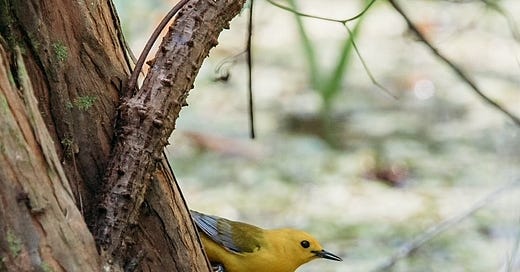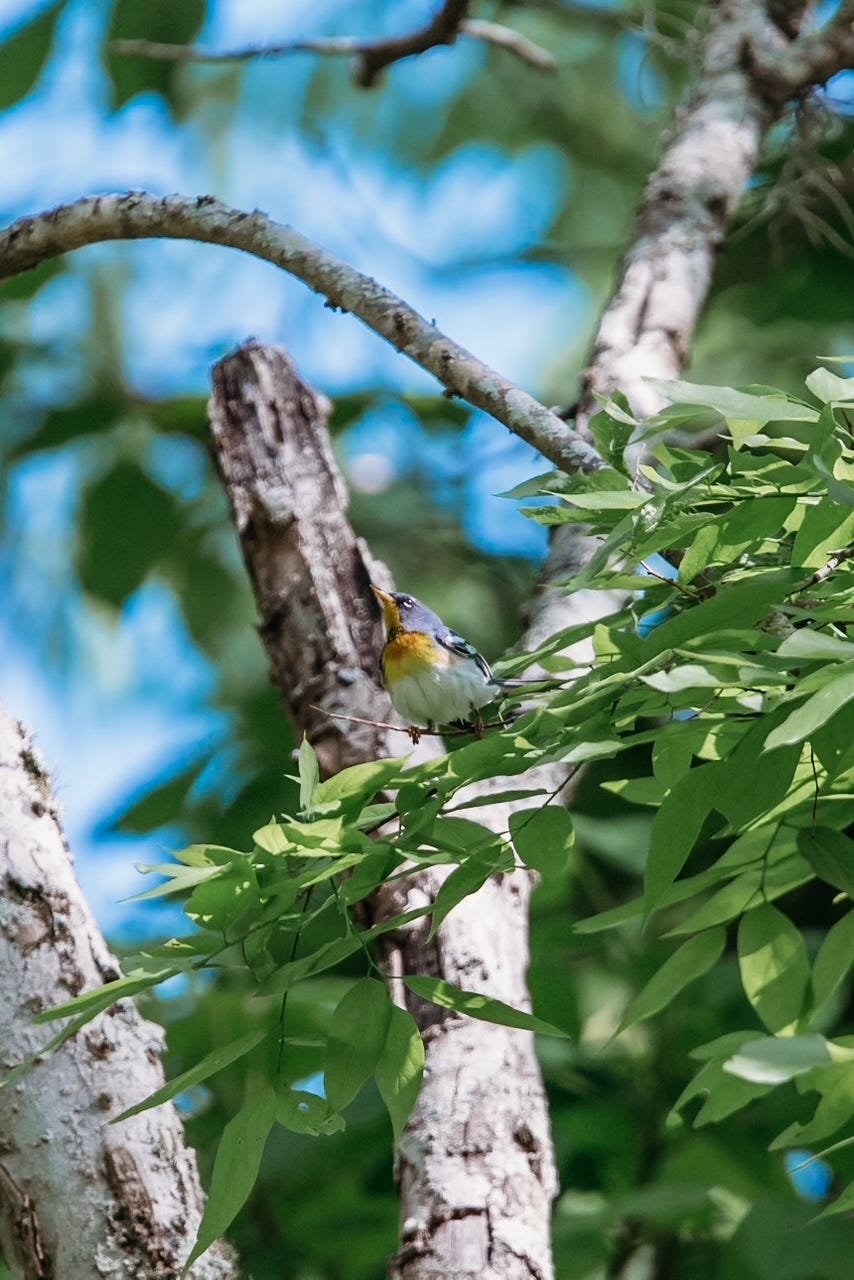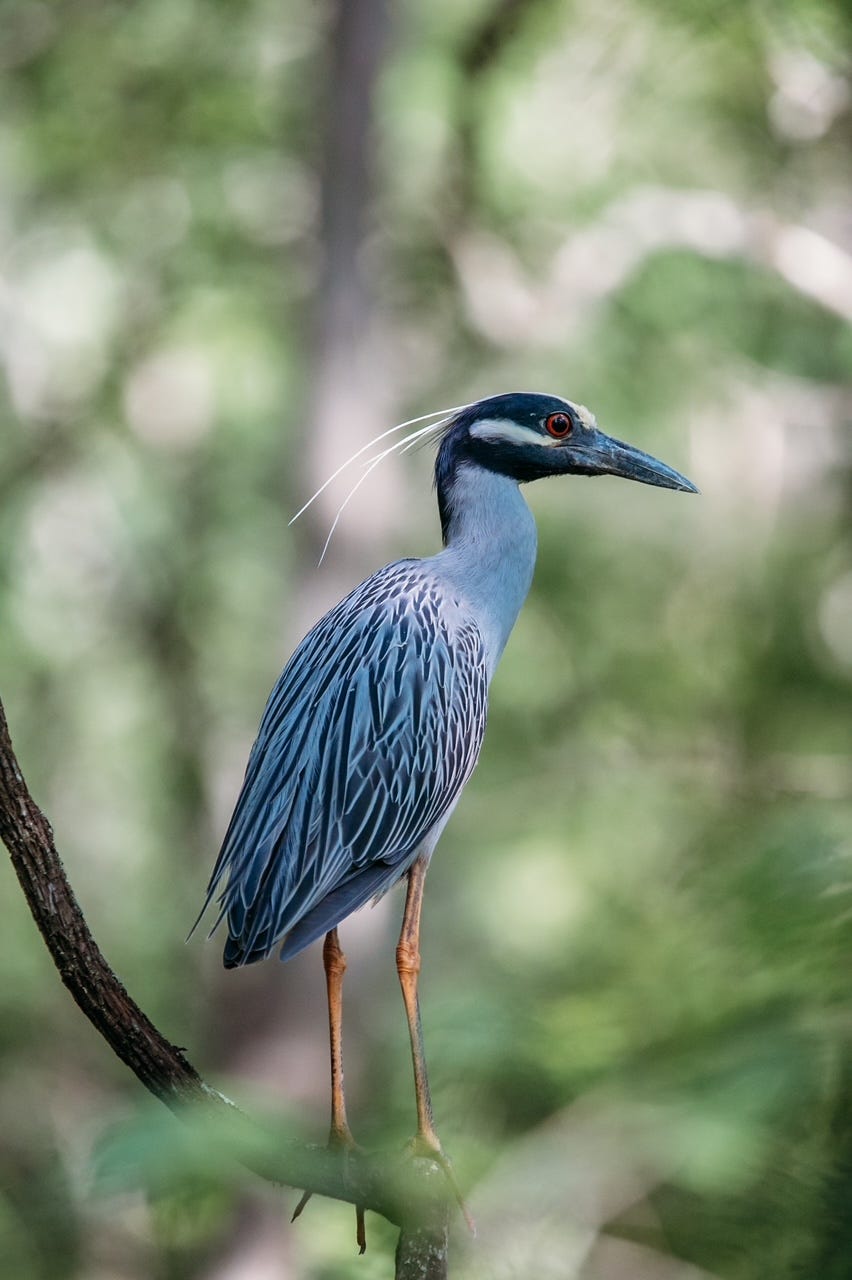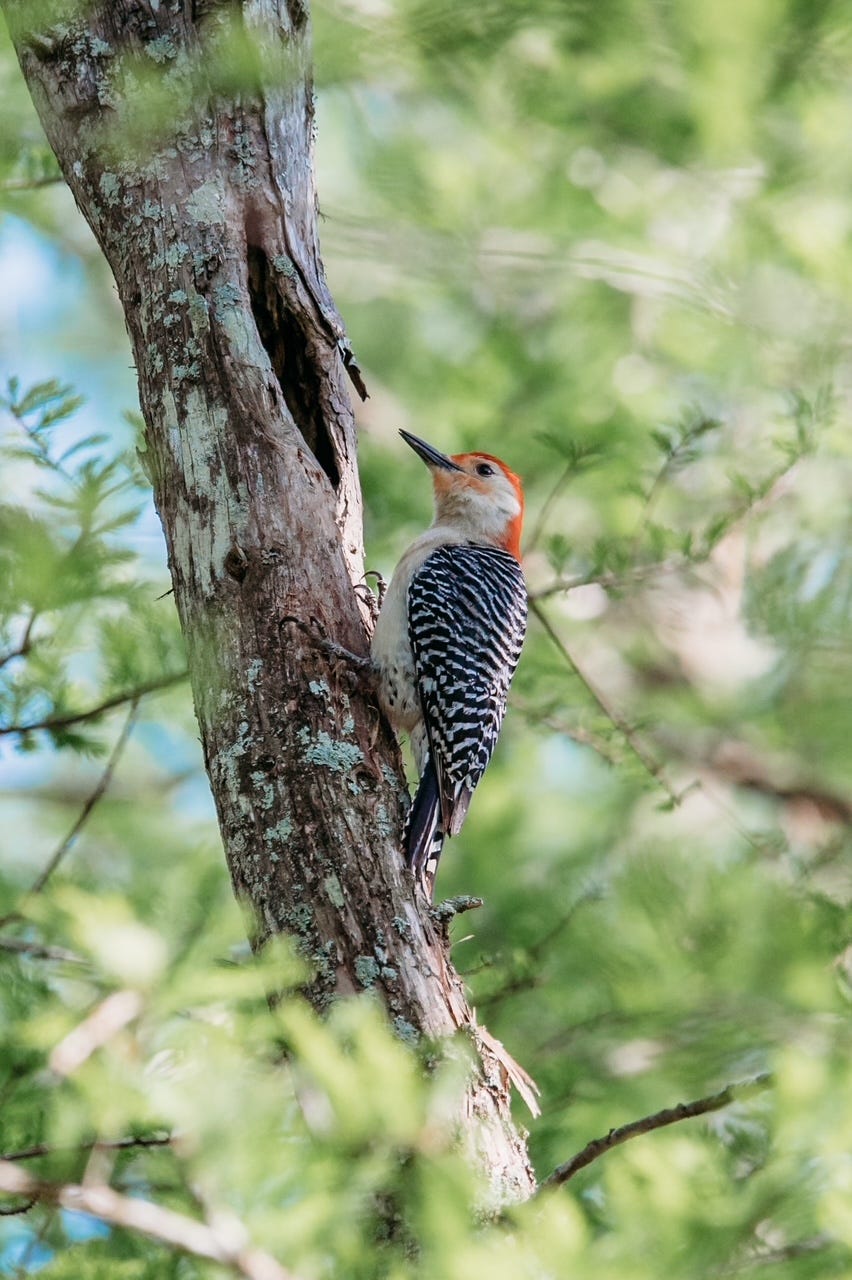It’s hard to find someone who is half-hearted about birds and birding. It’s not really a “sort of” kind of thing. On the one side, you have the passionate; on the other, the “doesn’t-do-a-thing-for-me.” I am a card-carrying member of the first group. Birding, as they used to say, sends me.
If I had untold riches, I would go birding around the world. But since I have told riches, I do my birding locally. Around here, in southwest Louisiana, where I live, the birding is pretty good. Migration helps. Birds make their way north from their winter homes in Mexico and Central America across the Gulf of Mexico and pass through Louisiana, stopping to bulk up for the long voyage to their northern summer homes. We also have many birds who are year-round residents—herons and egrets, especially.
Yesterday, I went birding with a friend, David Hebert, a birder and fine photographer, at the Nature Conservancy’s Cypress Island Preserve at Lake Martin in southwest Louisiana. It was a good day. We met at 9AM and set off. The morning was ideal, sunny with temperatures in the 70s. The path we walked down is canopied, shadow-throwing, calm, wide.
The pathway is bordered on each side by clean, un-fetid swamp, with tall, healthy cypresses, more than I’d ever seen in Louisiana in one place. There were no other people. It was quiet, except for nature. We walked at a leisurely pace, stopping often to listen. There were birds there, we could hear them, but they were not always easy to see. But see some we did.
We were looking for Prothonotary Warblers especially. David had seen them there before in some numbers. That name sounds like an eccentric British name out of an Evelyn Waugh novel. He even has a character with a bird’s name, Peregrine Crouchback. I can see someone named Prothonotary in a Waugh novel. According to Cornell’s “All About Birds,” “The Prothonotary Warbler got its name from the bright yellow robes worn by papal clerks, known as prothonotaries, in the Roman Catholic church.”
We saw several. It’s a piercingly bright bird. I love warblers in general. They’re small, flitty birds with a variety of colors, the main one being yellow. It’s like spotting a sunburst in a tree.
David, whose business is photography, snapped away.
We saw two Barred Owls.
We saw a Northern Parula, another warbler.
We heard, but could not see, a White-eyed Vireo. They’re small birds, often hiding in underbrush, and hard to locate, with a strong sound.
We saw a Yellow-crowned Night Heron.
We saw a Red-bellied Woodpecker.
The non- or anti-birder will reply, “So what?”
I’d like to bring in the novelist Jonathan Franzen here. He’s an avid birder. He wrote a piece for National Geographic titled, “Why Birds Matter.” It’s insightful and persuasive and paywalled. National Geographic, in some instances, you should not paywall articles. You are essentially saying, “Birds matter and I’ll tell you why if you pay me.” So how important can they be, Nat. Geo.? Only to those with money?
Instead, here’s a (free) interview with Franzen via the Audubon Society. In the interview, when he’s asked why he loves birds, Franzen answers, simply, “They sing. They fly. You can actually see the whole animal taking wing. They make nests. Flight, the complexity of their behavior, their beauty, and I’ve already mentioned song, but I’ll mention it again.”
Birds make you—me, at least—less consumed with myself and bestow me with a sense of wonder. Wonder is a child-like emotion that many of us lose as adults, because it’s not sanctioned as adult-worthy. It’s sloppy and uncontained and obvious. It’s made of 100% pure, unadulterated enthusiasm. There is no arrogance in wonder, and it’s is often followed, or accompanied by, caring. And caring is what we need. “We want more people to be interested in birds,” Franzen says, “because when you create somebody who cares about birds, you create somebody who is concerned about the environment.”
We finished our birding and walked back to our cars. On the way, we saw a rookery in the distance with egrets and Roseate Spoonbills perched in number in trees. We couldn’t get close, I’m sure by design, but I saw flashes of vivid pink, some in flight, that left me stunned and exuberant.
Next time, as Robert Frost says, “You come too.”











The last time I was in Cumberland it was there. Most of the birds were the tiny sanderlings which was fun trying to see the differences.
I love being in conversation with you :). I'm good.